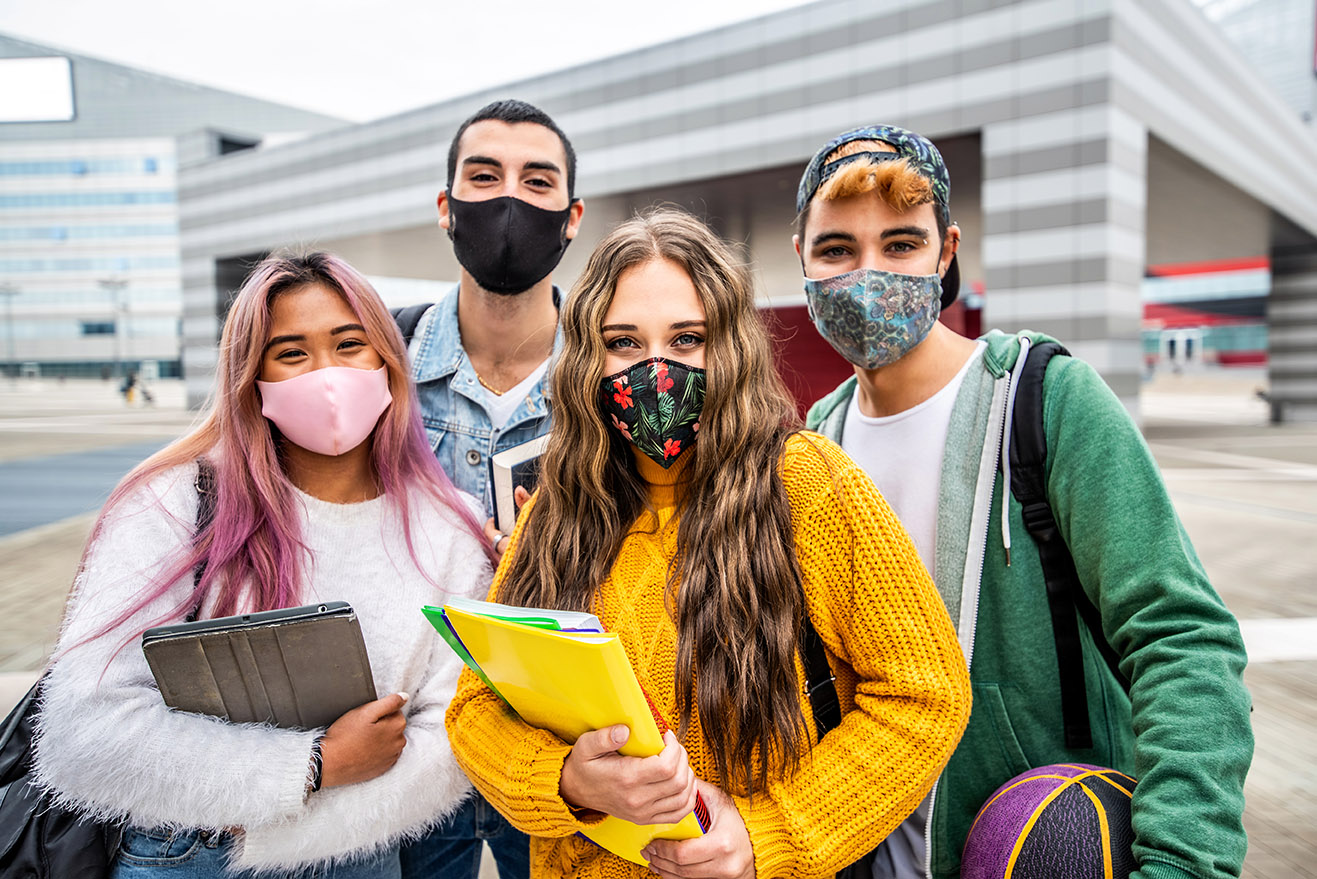
After a year of virtual and hybrid schooling, many children are returning to in-person learning. This is welcome news. In addition to the academic and social engagement schools provide, they also offer critical services and benefits that include school supported resources like meal programs, special education, mental health services, and childcare. And while the absence of in-person education has been difficult for everyone, it has been of particular concern for students in low-resourced communities with less access to technology, those experiencing homelessness, violence in the home, or those whose parents and caregivers could not stay home to provide childcare.
While keeping students, teachers, staff and communities safe from COVID-19 is of top concern for any return to school, there may be other challenges that returning to the classroom brings. With the return to classrooms there are many changes which may make students feel nervous or anxious: mask-requirements, physical distancing, changes to classrooms and school layouts, reduced in-person interactions with friends, and fears about contracting COVID-19. It may take some time for students (and staff) to get back into the rhythm of being in the classroom. Some students may need extra support to help them navigate the changes and cope.
There are also children who enjoyed or even thrived during virtual learning because they were separated from children who have bullied them. Returning to in-person school may be stressful for them, fearing that they might experience bullying yet again.
Additionally, educators should be aware that some returning children may have increasingly experienced adverse childhood experiences during this past year, such as violence in the home, financial challenges, food insecurity, and the mental and emotional challenges that the pandemic may have brought along. Additionally, many children – and their families – could have experienced different forms of loss this past year, such as the death of loved ones, changes in their routines, missed significant life events, or breaks in continuity of healthcare.
Help Students Transition to In-Person Learning
It is important to recognize these challenges and check in with all students as they transition back. Some ideas that may help ease students back into in-person classes:
- Check in with children about how they’re feeling about going back to school.
- Maintain a morning, after-school, and evening routine.
- Come up with a fun, end of week activity to look forward to.
- Let children know it’s okay to talk with a school counselor if they’re having a difficult time.
- Acknowledge the changes to classroom and school norms.
- Have open discussions about students' experiences with both virtual and in-person learning. What worked for them and what didn't? What was hard, funny, or easy about both formats?
- Help students reflect on ways they’ve grown in the past year, or what they’ve learned about themselves.
For children who have experienced bullying, remind them that speaking up about it and telling a trusted adult is important. For adults, recognize the warning signs of bullying. Children who are being bullied may want to avoid school, feel sick often, or show a loss of interest in schoolwork. Children who are bullying others may have behavioral problems, become increasingly aggressive, or have problems accepting responsibility for their actions. No single factor determines who is at risk of being bullied or bullying others. Often children who are perceived as different from others may be at risk of being bullied.
Bullying Prevention Resources for Educators, Parents and Caregivers
Here are some resources and tips for educators as schools return to in-person classes:
- Los espectadores son fundamentales para la prevención y la intervención ante el acoso
- Mejorar el ambiente escolar para prevenir el acoso
- Understanding the Roles of School Administrators in Community-Wide Bullying Prevention Efforts
- Crear un ambiente seguro y de respeto en las aulas del país
- How to Stop Bullying at School
- COVID-19 Parental Resources Kit: Ensuring Children and Young People’s Social, Emotional, and Mental Well-being

